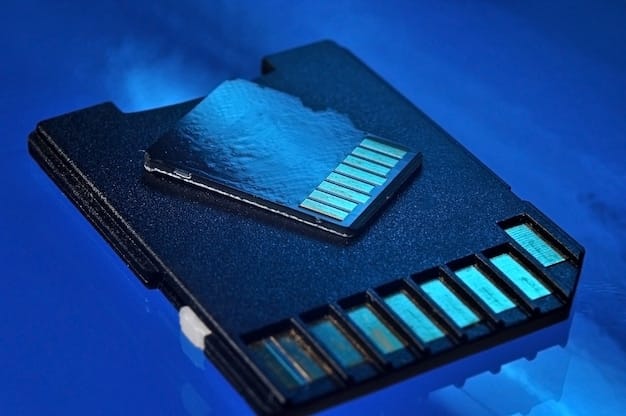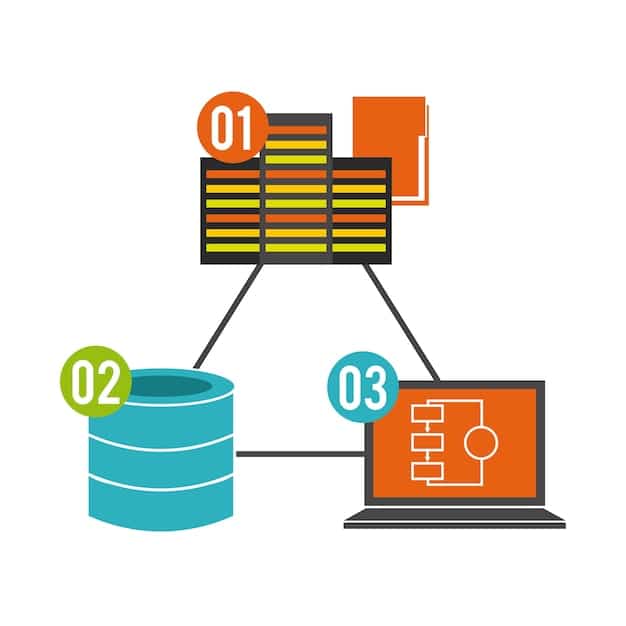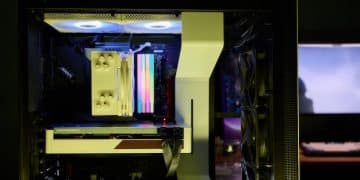Will DirectStorage Eliminate Loading Screens? A Deep Dive

Will DirectStorage Eliminate Loading Screens? A Deep Dive into the Technology explores how this innovation bypasses traditional bottlenecks, allowing for much faster data transfer between storage and the GPU, potentially revolutionizing gaming load times.
Tired of staring at loading screens? The promise of instant gaming is closer than you think, thanks to technologies like DirectStorage. But will DirectStorage eliminate loading screens? A deep dive into the technology reveals a multi-faceted answer, addressing performance gains, compatibility, and real-world impact.
Gamers have long endured frustrating waits as games load assets, levels, and textures. Will DirectStorage Eliminate Loading Screens? A Deep Dive into the Technology investigates how this groundbreaking API from Microsoft offers the potential to drastically reduce those load times. Let’s explore how it works, and what it means for the future of gaming.
Will DirectStorage Eliminate Loading Screens? A Deep Dive into the Technology
The question on every gamer’s mind: will DirectStorage eliminate loading screens? A deep dive into the technology is necessary to understand its potential. DirectStorage is an API (Application Programming Interface) developed by Microsoft that aims to revolutionize how games load data. It promises to significantly reduce loading times and improve the overall gaming experience. But how does it work, and what are the limitations?
DirectStorage isn’t just about faster hardware; it’s about smarter software. It optimizes the flow of data from storage devices (like NVMe SSDs) directly to the GPU, bypassing traditional bottlenecks that slow down the process. Let’s delve deeper into the specifics.
How DirectStorage Works
DirectStorage streamlines the data transfer process, enabling the GPU to directly access and decompress game assets stored on high-speed storage devices. This direct path minimizes CPU overhead and maximizes the utilization of the GPU’s processing power.
- Direct Data Transfer: Eliminates the CPU as the primary intermediary for data transfer.
- GPU Accelerated Decompression: Offloads decompression tasks to the GPU, freeing up CPU resources.
- Parallel Processing: Enables multiple data requests to be processed simultaneously.
By implementing these core features, DirectStorage significantly reduces latency and improves the overall efficiency of data loading, leading to faster loading times and a more seamless gaming experience.

In conclusion, DirectStorage works by creating a more direct and efficient pathway for data transfer, bypassing traditional bottlenecks and maximizing hardware utilization. It’s a significant step forward in gaming technology.
Benefits of DirectStorage in Gaming
Beyond just faster loading, will DirectStorage eliminate loading screens? A deep dive into the technology reveals more benefits. The advantages of implementing DirectStorage in games are numerous. It goes beyond just reducing the time spent staring at loading screens.
The technology aims to create a more immersive and fluid gaming experience by minimizing interruptions and maximizing the utilization of modern hardware.
Improved Load Times
One of the immediate and most noticeable benefits of DirectStorage is the significant reduction in loading times. Games that utilize DirectStorage can load levels, textures, and assets much faster than traditional methods. This leads to less waiting and more playing.
Enhanced Texture Streaming
DirectStorage enables faster and more efficient texture streaming. This means that games can load high-resolution textures on demand, without causing stuttering or performance dips. Players experience sharper visuals and a more detailed game world, even when moving quickly through large environments.
Reduced CPU Overhead
By offloading data decompression to the GPU, DirectStorage reduces the workload on the CPU. This frees up the CPU to handle other tasks, such as game logic, AI, and physics calculations. The result is smoother gameplay and improved overall performance, especially in CPU-intensive games.
Ultimately, DirectStorage delivers a more responsive and visually richer gaming experience by optimizing data loading and reducing CPU strain. The benefits are clear – smoother gameplay, faster loading, and more immersive worlds.
Hardware and Software Requirements for DirectStorage
Will DirectStorage eliminate loading screens? A deep dive into the technology also requires examining the necessary hardware and software. Adopting DirectStorage isn’t as simple as flipping a switch. It requires specific hardware and software configurations to function correctly.
Understanding these requirements is crucial for both game developers and gamers looking to take advantage of the technology’s benefits.
- NVMe SSD: A high-speed NVMe SSD is essential to fully realize DirectStorage’s potential, as traditional HDDs or SATA SSDs cannot provide the necessary bandwidth.
- DirectX 12 Compatible GPU: A modern GPU that supports DirectX 12 is required to handle the GPU-accelerated decompression.
- Windows 10 or 11: DirectStorage is available on Windows 10 (version 1909 or later) and Windows 11, with Windows 11 offering additional optimizations.
Meeting these hardware and software requirements is vital to unlocking the full potential of DirectStorage and experiencing the reduced loading times and improved performance it promises. Without them, the benefits will be limited or non-existent.
Current Games Supporting DirectStorage
An important aspect of will DirectStorage eliminate loading screens? A deep dive into the technology is looking at game support. While DirectStorage holds immense promise, its widespread adoption depends on game developers integrating the technology into their titles.
As of now, only a handful of games actively support DirectStorage. These early adopters showcase the technology’s capabilities and pave the way for broader implementation.
Examples of Games with DirectStorage
Some notable examples of games that currently support DirectStorage include:
- Forspoken: One of the first major titles to implement DirectStorage, showcasing significant loading time reductions.
- Ratchet & Clank: Rift Apart (PC): Takes advantage of DirectStorage to deliver near-instantaneous dimensional rifts.
While the list of supported games is still relatively small, it is expected to grow as more developers recognize the advantages of DirectStorage and integrate it into their future projects. Keep an eye out for updates as more titles embrace this game-changing technology.
Challenges and Limitations of DirectStorage
Even with its advantages, will DirectStorage eliminate loading screens? A deep dive into the technology also acknowledges challenges. Despite its potential, DirectStorage faces certain challenges and limitations that could hinder its widespread adoption and effectiveness.
Understanding these challenges is essential for a balanced perspective on the technology’s future.

Dependency on NVMe SSDs
DirectStorage relies heavily on the performance of NVMe SSDs. Gamers using slower storage devices may not experience the full benefits of the technology.
Developer Adoption
The adoption of DirectStorage requires developers to actively integrate the API into their games. This takes time and resources, and it’s not guaranteed that all developers will prioritize it.
Compatibility Issues
Older hardware and software may not be fully compatible with DirectStorage, potentially limiting its reach to gamers with the latest systems.
Overcoming these challenges is crucial for DirectStorage to reach its full potential. Addressing hardware limitations and promoting developer adoption will be key to its future success.
The Future of DirectStorage in Gaming
So, ultimately, will DirectStorage eliminate loading screens? A deep dive into the technology concludes with a look at the future. The future of DirectStorage in gaming looks promising, but several factors will influence its trajectory.
As hardware continues to evolve and developers become more familiar with the technology, we can expect to see even greater performance gains and broader adoption.
DirectStorage is poised to become a standard feature in PC gaming, provided that the ecosystem continues to develop and mature. More games will implement it, and the hardware will become increasingly accessible.
In short, the future looks bright for DirectStorage, with the potential to revolutionize gaming and deliver a truly seamless experience.
| Key Point | Brief Description |
|---|---|
| 🚀 Faster Load Times | Significantly reduces loading times in supported games. |
| 💻 Hardware Requirements | Requires NVMe SSD and DirectX 12 compatible GPU. |
| 🎮 Game Support | Limited but growing list of games with DirectStorage. |
| 💡 GPU Offloading | Decompression moved to the GPU, reducing CPU overhead. |
Frequently Asked Questions
DirectStorage is a Microsoft API that enables faster data transfer between storage devices and the GPU, reducing loading times in games. It bypasses CPU bottlenecks for greater efficiency.
You’ll need an NVMe SSD for fast storage and a DirectX 12 compatible GPU to handle the decompression. It also requires Windows 10 or 11 as the operating system.
While DirectStorage dramatically reduces loading times, complete elimination depends on game design and optimization. Some loading may still occur, but it will be significantly faster.
While it benefits high-end PCs the most due to their faster components, DirectStorage can still offer improvements on mid-range systems with NVMe SSDs, making it a worthwhile upgrade.
Check the game’s specifications or system requirements. Developers usually highlight DirectStorage support as a key feature. Also, look for the DirectStorage logo on the game’s packaging.
Conclusion
In conclusion, will DirectStorage eliminate loading screens? A deep dive into the technology shows that it’s a significant step towards minimizing load times and enhancing the overall gaming experience. While challenges remain concerning universal adoption and hardware requirements, the future looks promising as more developers integrate and implement this groundbreaking technology .
DirectStorage is poised to revolutionize gaming by getting you into the action faster. By enabling quicker data transfer and reducing bottlenecks, DirectStorage offers the potential to deliver seamless gaming experiences and visually stunning, immersive worlds.





